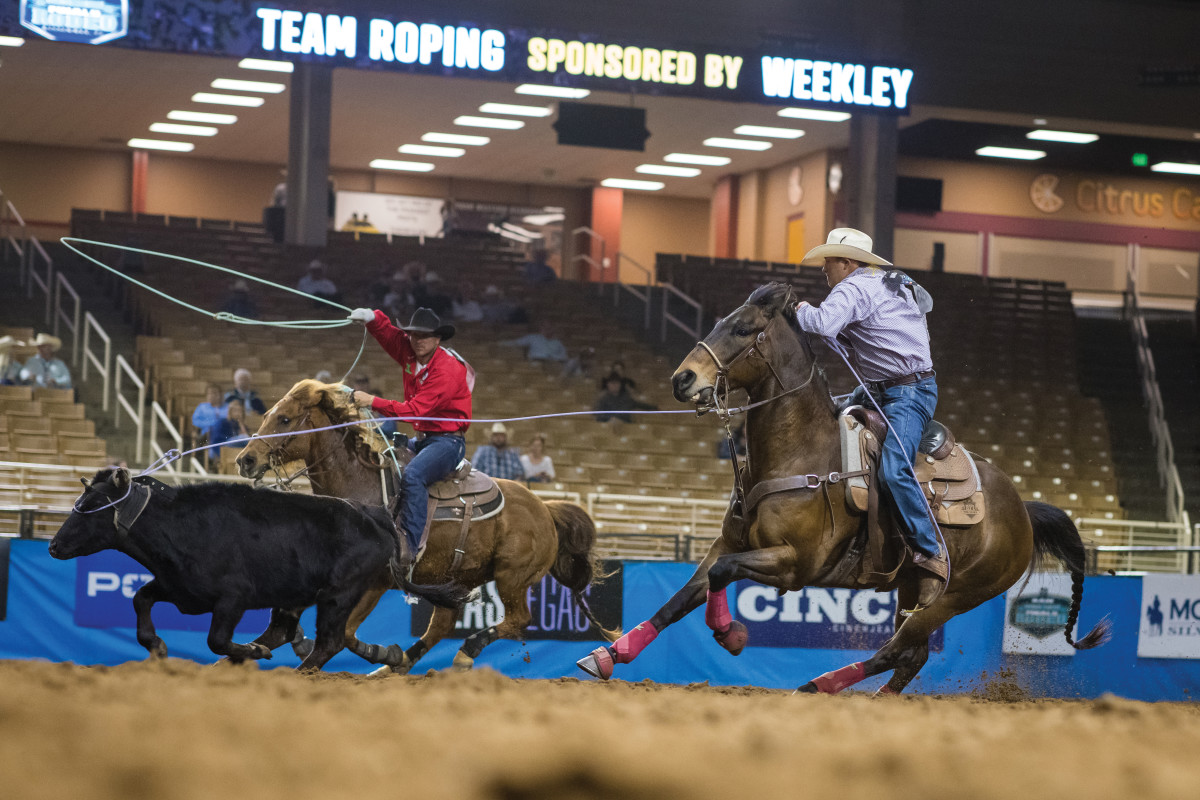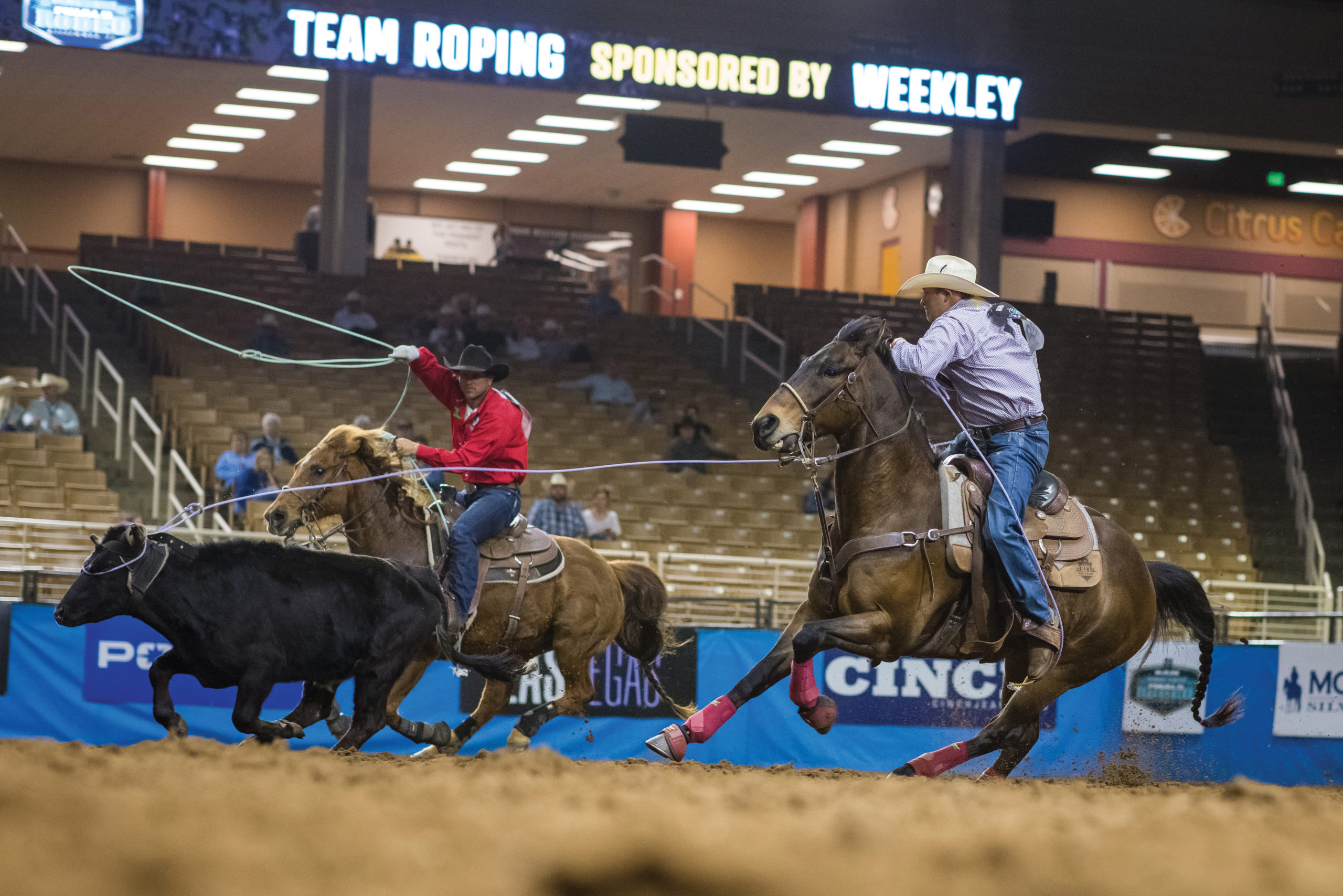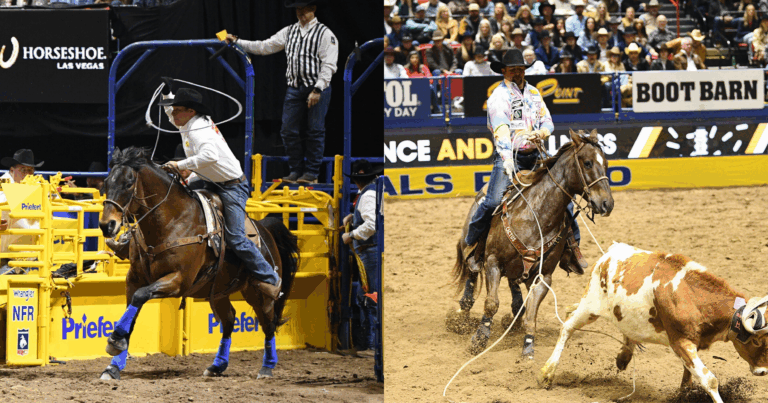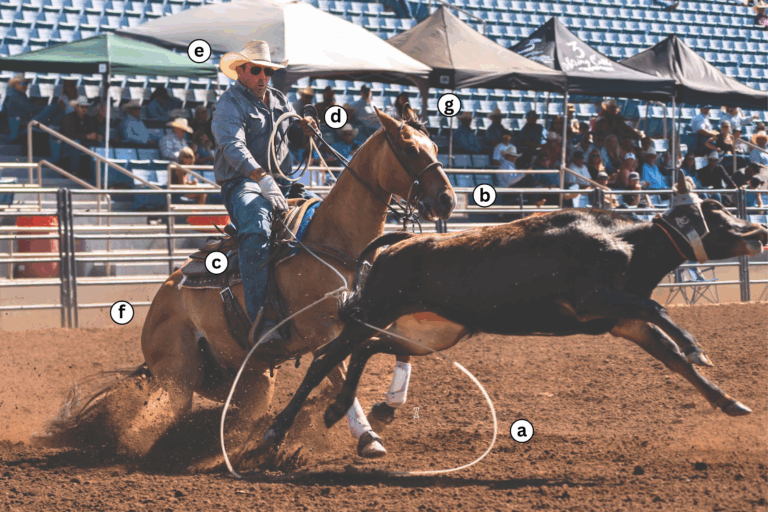Situation:
First round of the Ram National Circuit Finals Rodeo in Kissimmee, Florida
Time:
5.2 seconds
Outcome:
Placed second in the first round, worth $3,849 each, and won the RNCFR after roping their final steer in 6.3 seconds worth $6,158 each, taking home a total of $19,706 each.
Ward and Hawkins II Dominate RAM National Circuit Finals Rodeo

Setup:
It’s a big arena—there’s plenty of left. We weren’t scared of getting hung up in the wall or anything. I think the barrier was one-under, so the barrier was pretty simple, and the cows were plenty good. It’s more pressure because you know if you can just keep catching, you’re going to have an opportunity to win good money because you know the rodeo pays so well. There’s only 26 teams. You know it’s going to just be a catching contest until the final cow, and then you always assume it’s going to be a three-second rodeo at the end. It just so happened that there was some bad luck for some teams, and we were able to catch ours clean, and we had the advantage of being last out, knowing we just had to catch him.
Mental Approach:
We were trying to catch four of them, and we needed to start off with the first one. I knew that I needed to take chances only maybe at the barrier—don’t be late. We knew the cow, not like he ran, but he was strong for the herd. I knew I needed to be close to the barrier, so that was really all that I was focused on. I wanted to watch him really clear through the chute and then try and get a good roll and just catch the cow. I knew Buddy would be trying to bring him to me and he was going to catch as fast as he could, in a way that we could do it over and over again.
Steer:
We had roped them through in the warm-up and we had videos. He was also at Arcadia, Florida. You can go back and watch them on The Cowboy Channel now, so we were able to see him and see what he did.
Buddy Hawkins:
He is doing a lot of stuff on the heel side to help the whole run. He handled the cow and was consistent. That horse doesn’t always want to go to the right sometimes, so Buddy is cutting the arena in half. He’s staying up and around the cow, not closing the gap too soon and getting too close to the cow, making it hard to heel him. He’s one of the best because of the way he rides his horses. That’s why he catches so many because, when you watch him, he doesn’t get himself in a bad spot very often.
Left Hand:
My horse doesn’t really love going to the cow—he likes to run away from the cow sometimes. If I’m lifting him up, trying to encourage him to stay at least a little bit going to them. I rope, ask for him to stay with the cow and his natural move is going to be to make the turn for me. I rope, lift him up and then he starts collecting and turning the cow, ideally.
Left Foot:
I’m using both feet, probably, squeezing him through the run after I throw to help encourage him more towards the cow so he’s not making the move on his own.
Biscuit:
He did awesome in that run. He was perfect at the barrier and let me get a great start. It all starts in the box, getting him going to the cow. He scored awesome, he headed to the cow good, and Buddy put him in the left lane and I was able to hit the horns sharp because my horse was going to the cow. I squeezed and kept him up and he collected. The wall slowed him down when I turned him to the left and opened the cow up. I pulled him and Buddy heeled him.









